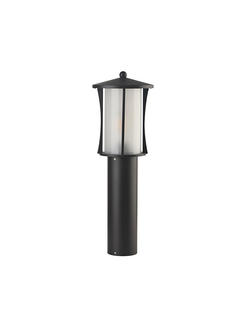It is crucial to conduct a comprehensive on-site survey and planning before installing outdoor lamp post fixtures. This stage involves a detailed analysis of the terrain, soil type, underground pipeline distribution, etc. of the installation site to ensure that the installation operation will not have a negative impact on the surrounding environment. At the same time, according to lighting requirements and design specifications, it is necessary to clarify the installation location, height, spacing of the lamps, as well as the model and quantity of the lamps required. The accuracy of this step is directly related to the smooth progress of subsequent installation and the realization of the final lighting effect.
During the preparation stage before installation of the lamp, necessary installation tools, materials and equipment must be collected, including electric drills, screwdrivers, wrenches, expansion plugs, sealants and waterproof gaskets. In addition, it is essential to conduct a comprehensive quality inspection of the lamps and their accessories to ensure that there is no damage, deformation or loss. According to the actual situation on site, detailed installation plans and emergency plans need to be formulated to deal with possible emergencies.
During the formal installation process, the first task is to fix the base of the lamp. Depending on the pre-planned position and height, drill holes in the column or support structure using an electric drill and install expansion plugs to ensure the stability of the base. During the fixing process, waterproofing measures such as sealant or waterproof gasket should be used to prevent rainwater from seeping into the lamp and ensuring its normal operation.
Next, install and wiring the lamps. Connect the lamp to the base and adjust its angle and position to ensure that the lighting effect meets the design requirements. During the wiring process, be sure to use wires, cables and connectors that meet relevant standards to ensure the reliability and safety of electrical connections. According to the power and current requirements of the lamp, select the appropriate power supply and switching equipment and perform the correct wiring operation. After wiring is completed, conduct electrical safety tests to ensure that there are no safety hazards such as leakage and short circuits.
During the entire installation process, special attention is needed to pay attention to the intelligent management and control needs of the lamps. With the rapid development of IoT technology, more and more outdoor lamps and lamps have begun to integrate intelligent control systems to achieve remote monitoring, automatic adjustment of brightness and color temperature. Therefore, during the installation process, it is necessary to reserve enough interfaces and channels for subsequent access to the intelligent control system. At the same time, select the appropriate controller and sensor according to actual needs and perform correct installation and debugging to ensure the efficient operation of the system.
.png?imageView2/2/format/jp2)
 English
English España
España عرب
عرب русский
русский Français
Français Deutsche
Deutsche







.jpg?imageView2/2/w/326/h/326/format/jpg/q/75)





 浙公网安备 33028102000771号
浙公网安备 33028102000771号